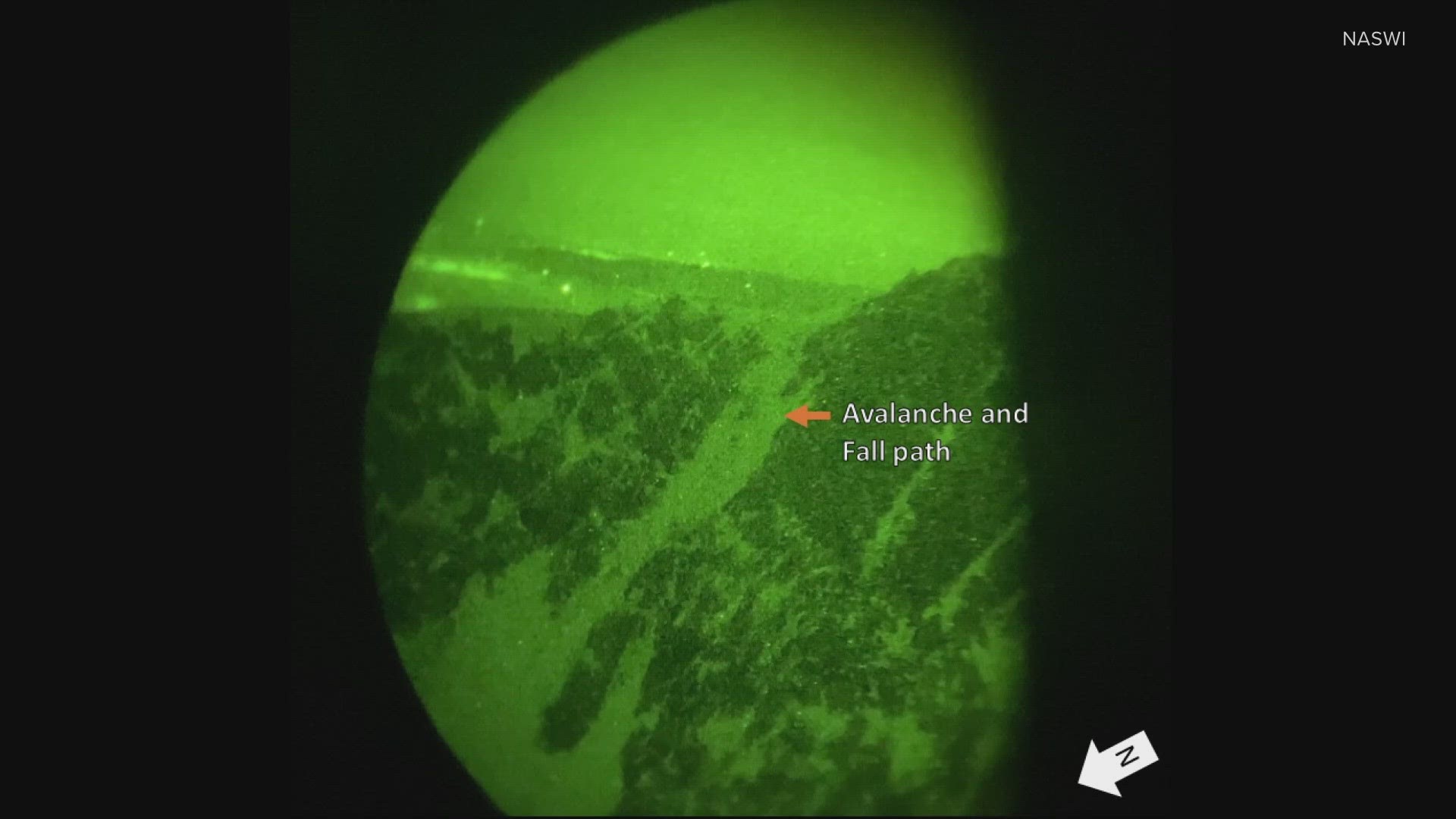MASON COUNTY, Wash. — A hiker is alive after falling more than 1,200 feet down a ravine on Mt. Ellinor in the Olympic National Forest. Rescuers lifted him to safety and he was treated at Harborview Medical Center with a broken arm, hypothermia symptoms and abrasions.
Naval Air Station Whidbey Island Search and Rescue says the hiker's partner called 911 and the Mason County Sheriff's Department reached out to the Air Force coordination center that checks for military capabilities in a given area. NAS Whidbey SAR had the bandwidth to respond, and a crew was en route to Mt. Ellinor around 6:20 p.m.
"We got on scene and we saw multiple avalanche paths and using our night-vision goggles because it was dark outside, we were able to see the top of the mountain where there were a bunch of footprints from him and his partner, but we couldn't really see where the footprints ended up going," Lt. Joey Curtis said. "Ultimately, we determined at that point to search the bottom of the avalanche debris pile and we all saw a light turn on and off in the middle of nowhere down in the avalanche pile and from there were able to go down and pick him up."
Curtis says the crew used a specialized procedure called direct deployment. The chopper hovered overhead as a crewman was hoisted down to secure the person and bring him back up.
"The biggest concern to me in the back was [the avalanche danger], so if we come into a hover for too long, we could potentially start another avalanche, so that was the base of concerns we had," said AWS1 Ricky Rosado, who served as crew chief for the mission.
Curtis says partners, including the Air Force Coordination Center, worked closely together to ensure the rescue. That includes Olympic Mountain Rescue, which had a ground team ready to hike in if they were needed.
Andy Graham says they spoke with the hiker's partner, who was able to give them fairly good directions that they could pass onto NASWI SAR. He says in this scenario, snowpack was pretty low but there was a lot of ice and recent avalanches had left chutes behind, making conditions difficult.
"Number one is to be prepared, not only with equipment but proper training and knowing what you're getting into and using the resources that are available," Graham said. "Northwest Avalanche Center- any time you're going to the backcountry, check the forecast and make sure you know what the conditions are."
Both Olympic Mountain Rescue and the Northwest Avalanche Center are nonprofits that operate on donations. You can learn more about OMR and donate here, and find NWAC forecasts here.

